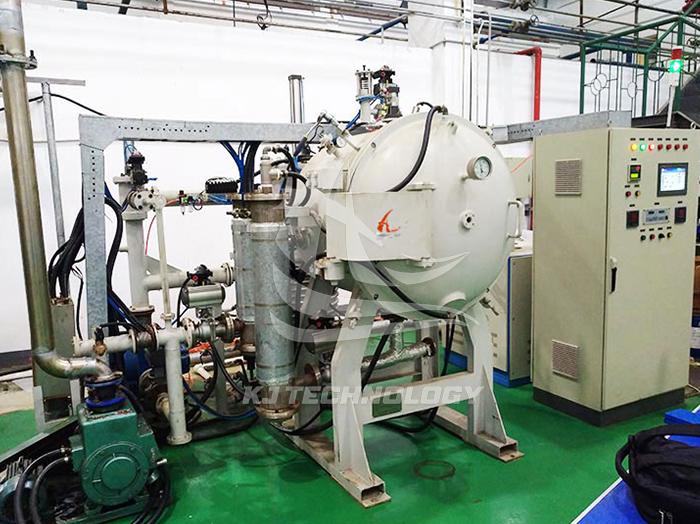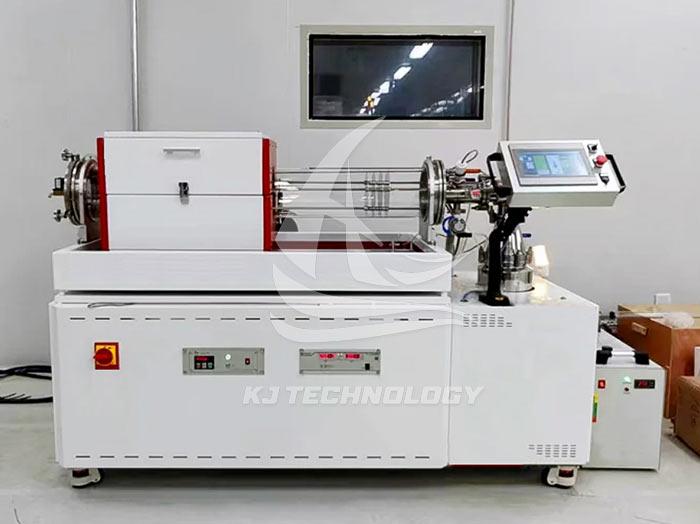The vacuum degree of the metal heat treatment furnace cannot be drawn up
 08-12-2025 Author: KJ technology
08-12-2025 Author: KJ technology
The inability to increase the vacuum degree in metal heat treatment furnaces may be caused by various reasons such as vacuum pump failure, aging or damage of seals, air leakage in the vacuum system, air release in the vacuum chamber, cooling system problems, electrical or control system failures, etc. It is necessary to investigate and take corresponding measures according to specific phenomena. The following is a detailed analysis:
1. Vacuum pump related issues
Vacuum pump malfunction:
Reasons: pump oil pollution, insufficient or too thin, poor or damaged operation of vacuum pump, pump overheating, expansion of components leading to insufficient clearance, etc.
Solution: Clean the vacuum pump, replace with new vacuum pump oil, replace with a new pump, strengthen the cooling of the pump, check if the power supply is normal, repair or replace damaged vacuum pump parts.
Insufficient pumping capacity of vacuum pump:
Reason: The pumping rate of mechanical pumps, Roots pumps, or high vacuum oil diffusion pumps is too low or the vacuum degree is not high.
Solution: Check the working condition of the vacuum pump to ensure normal power supply. If necessary, repair or replace damaged vacuum pump parts.
2. Sealing and pipeline issues
Aging or damage of seals:
Reason: The aging, corrosion, or damage of the sealing components can cause air leakage.
Solution: Check and replace aging or broken seals to ensure good sealing.
Loose or leaking pipeline connections:
Reason: Loose pipeline connections, leakage of electromagnetic valves, pipe joints, vacuum pump suction valves, and sealing gaskets around the working chamber.
Solution: Check the pipeline connections, solenoid valves, pipe joints, etc., and repair or replace them.
3. Leakage and deflation of vacuum system
Vacuum system leakage:
Reason: There are leakage points in the vacuum furnace body, such as foreign objects at the bottom of the furnace, aging or damaged sealing rings, etc.
Solution: Use the static pressure rise method to determine the leakage situation, close the high-pressure valve, and observe the change in the vacuum gauge pointer. If the pointer drops quickly, it indicates that the vacuum chamber is leaking, and the leak point should be identified and repaired. For external leaks, flame detection can be used; For internal leaks, it is necessary to conduct zoning inspections and check for any wet spots in the water supply pipeline.
Vacuum chamber venting:
Reason: The vacuum chamber is too dirty, causing the lining material to release air.
Solution: Clean the dust and oil stains inside the vacuum furnace to maintain cleanliness and hygiene. For the venting of furnace lining materials, the amount of venting can be reduced by extending the pumping time or adopting other measures.
4. Cooling system issues
Insufficient or blocked cooling water supply:
Reason: Insufficient cooling water supply, blocked cooling system, etc.
Solution: Check if the cooling water pipeline is unobstructed, ensure sufficient cooling water supply, and clean any blockages.
Leakage in the cooling system:
Reason: Internal leakage often occurs on equipment with water cooling points, which may lead to significantly low pumping speed of mechanical pumps, low vacuum gauge readings, rapid emulsification of mechanical pump oil, and obvious rusting of iron-based components in the vacuum chamber.
Solution: First clean the cavity, then add cooling water and carefully check for any wet spots in the water pipeline. Wet spots are the leakage points, and repair them.
5. Electrical and control system issues
Electrical component malfunction:
Reason: Damage or poor contact of the power supply circuit of the control system, damage or aging of internal components of the control system, etc.
Solution: Check the power supply circuit of the control system to ensure that the power supply is normal; Check and replace damaged components inside the control system.
Control system software malfunction:
Reason: Software malfunction may cause the control system to malfunction.
Solution: Update or reinstall the control system software to ensure that all programs comply with the latest operating standards.








